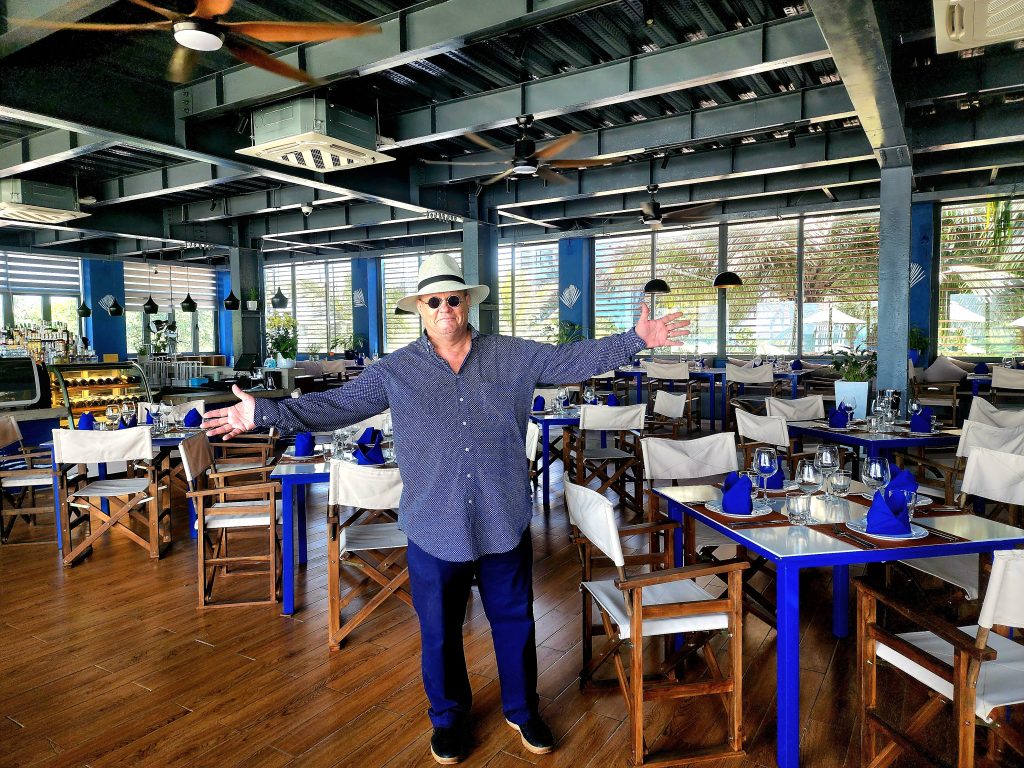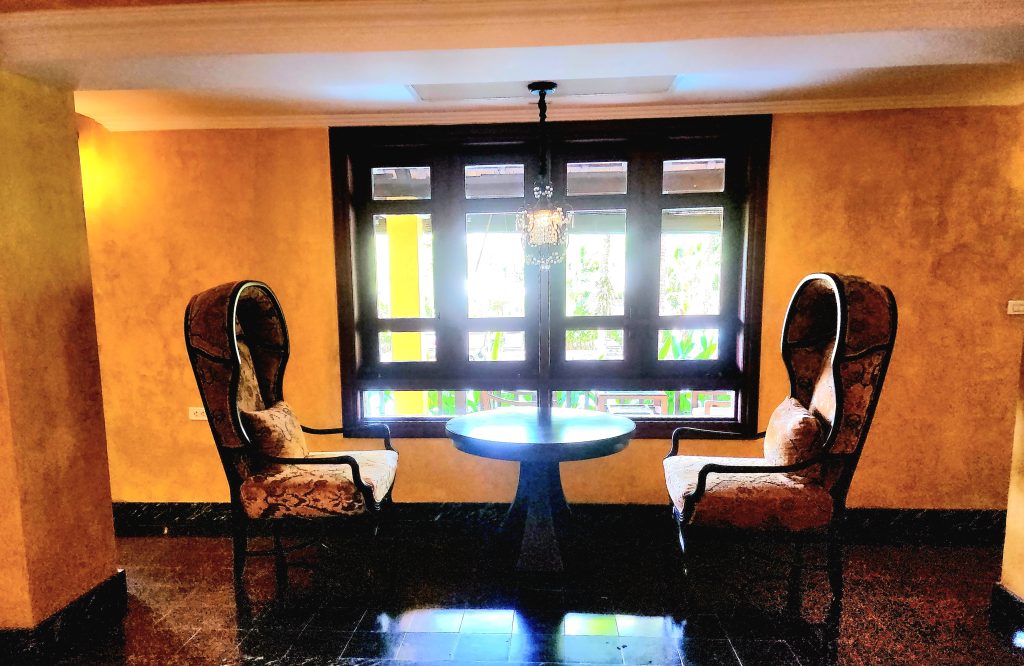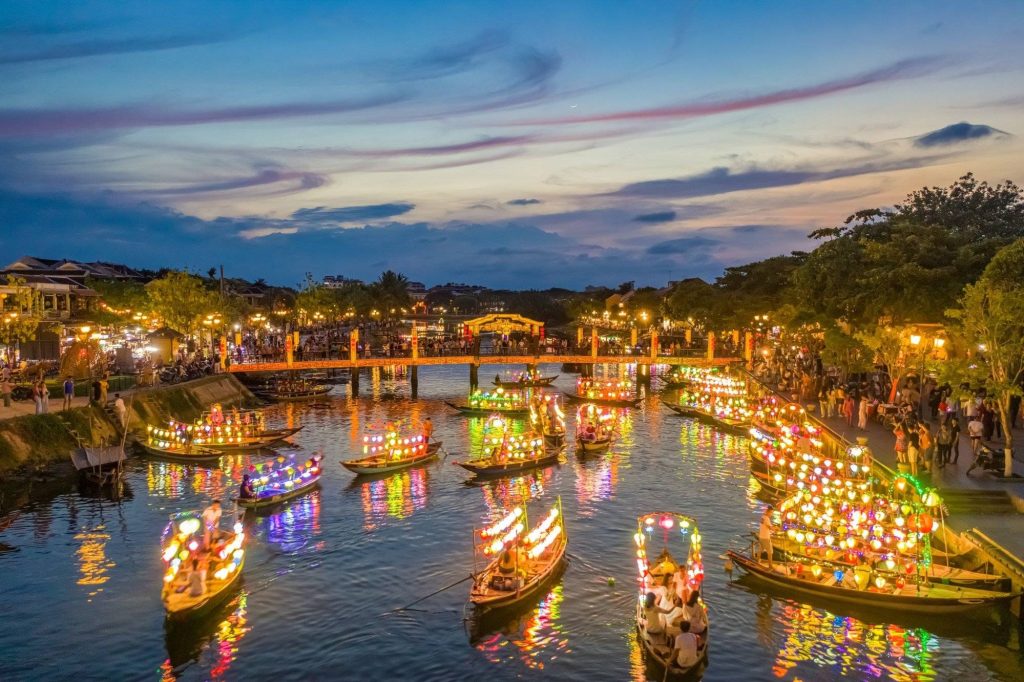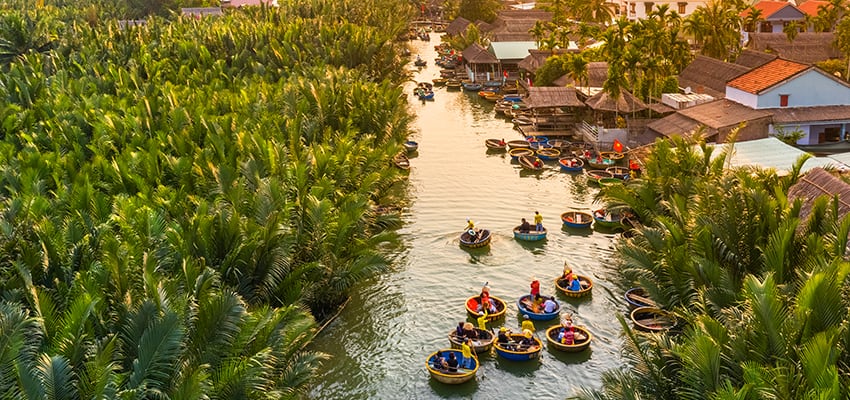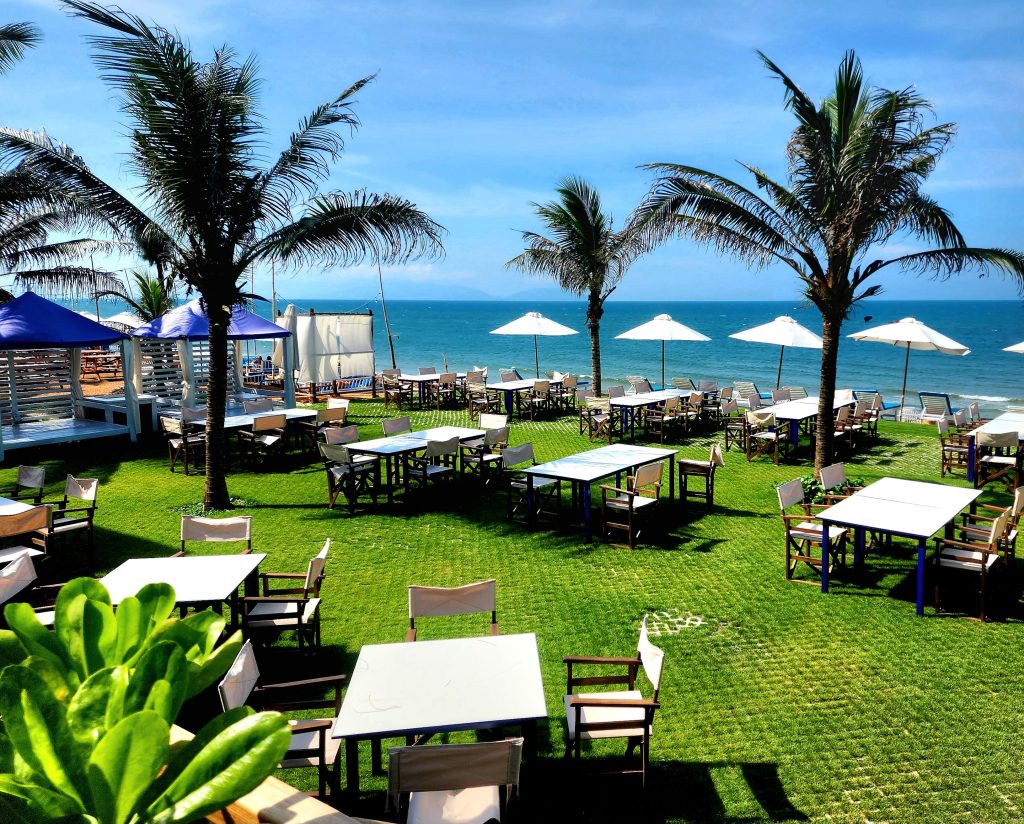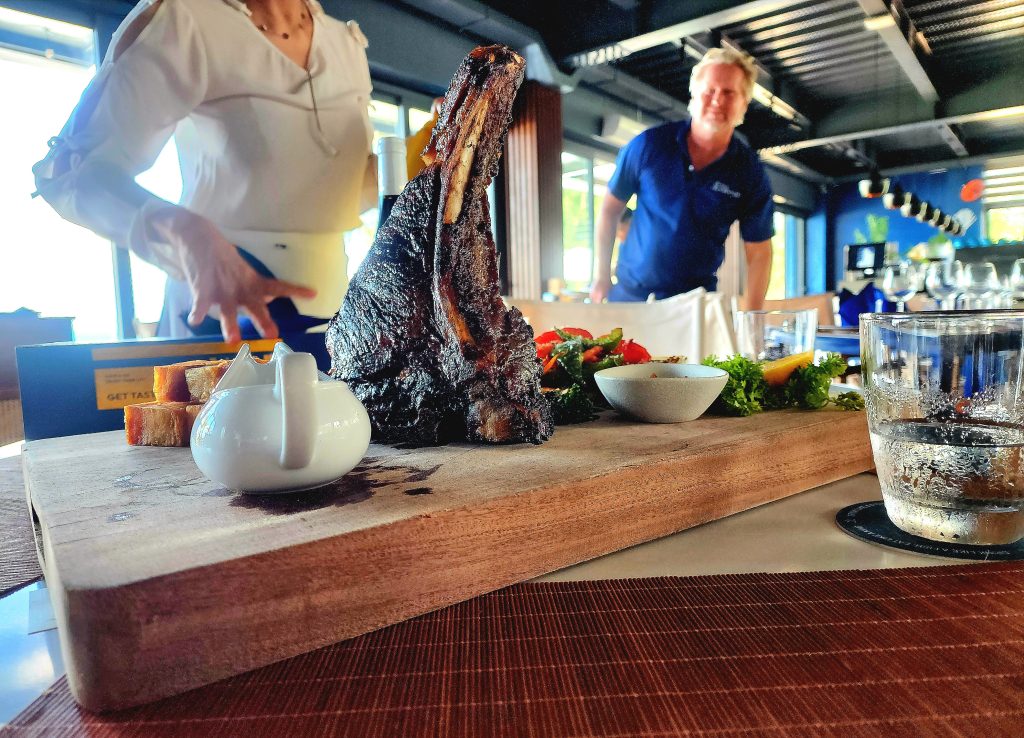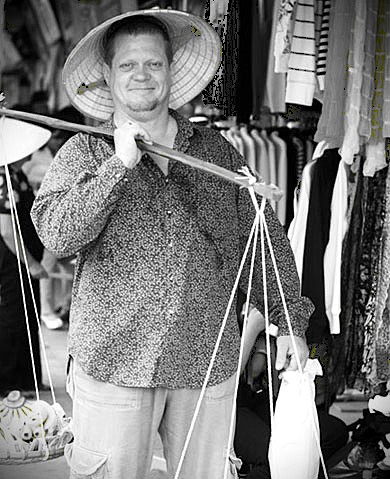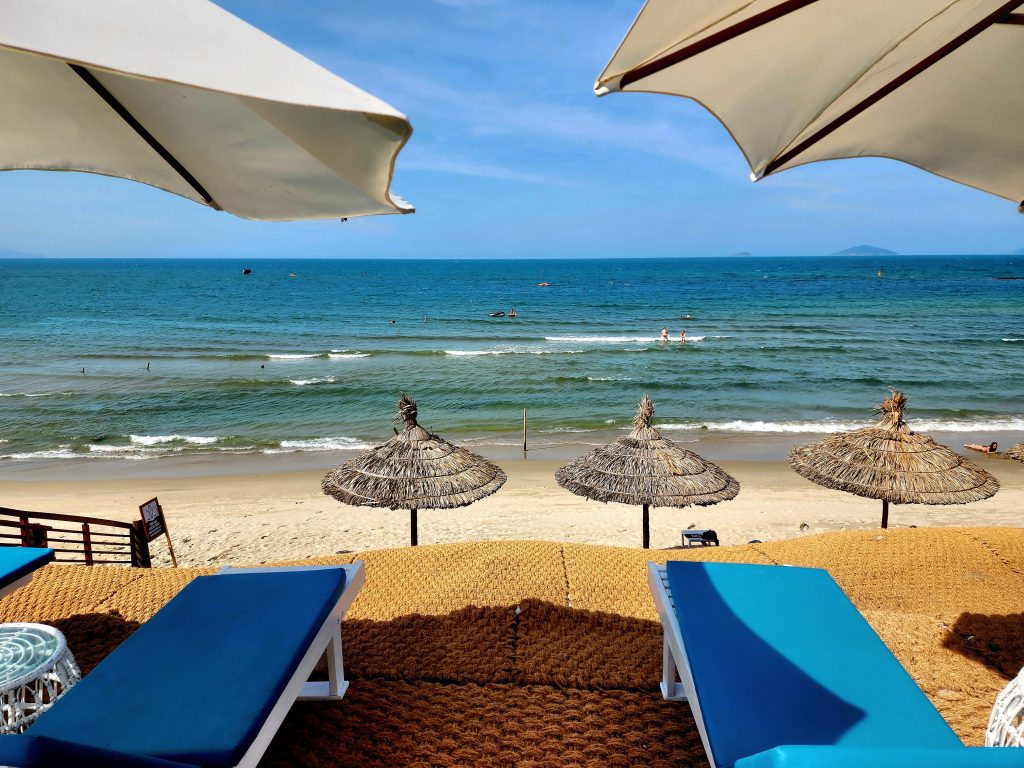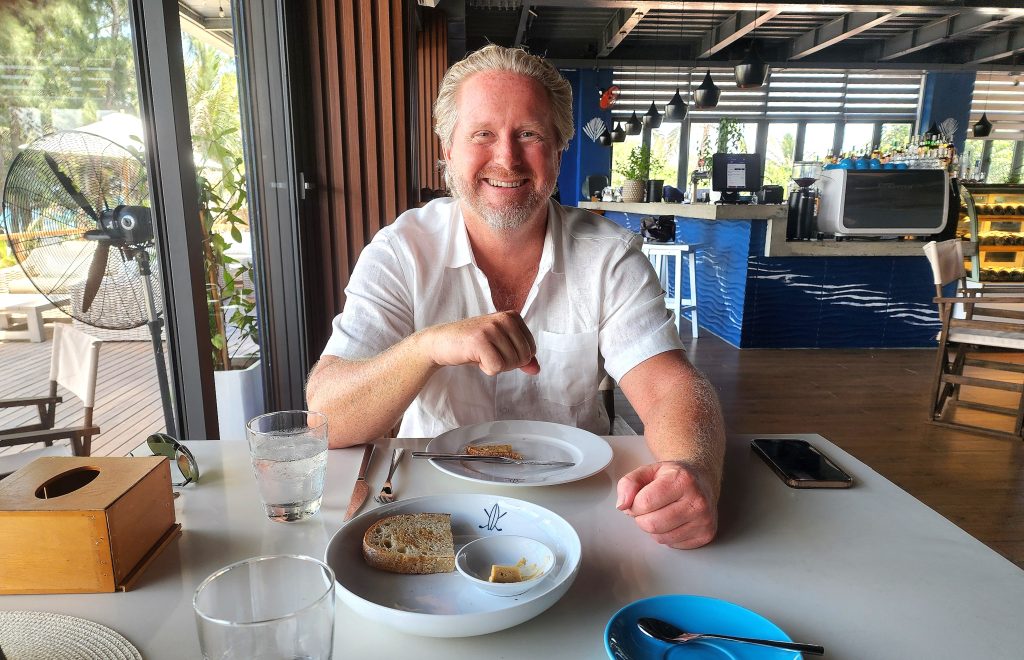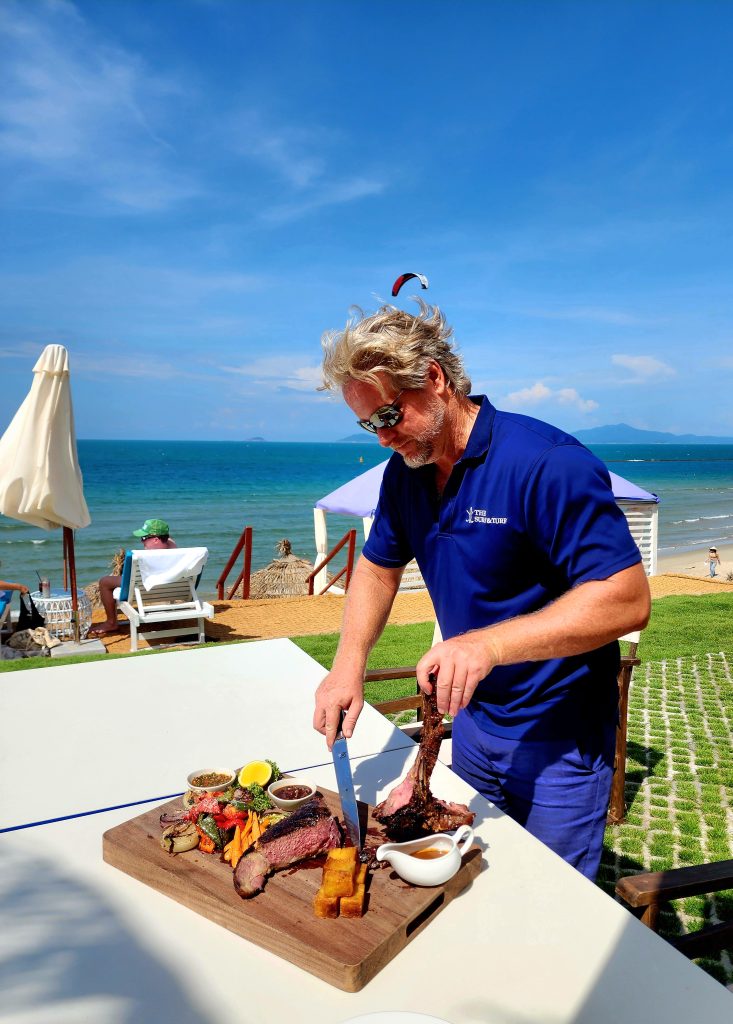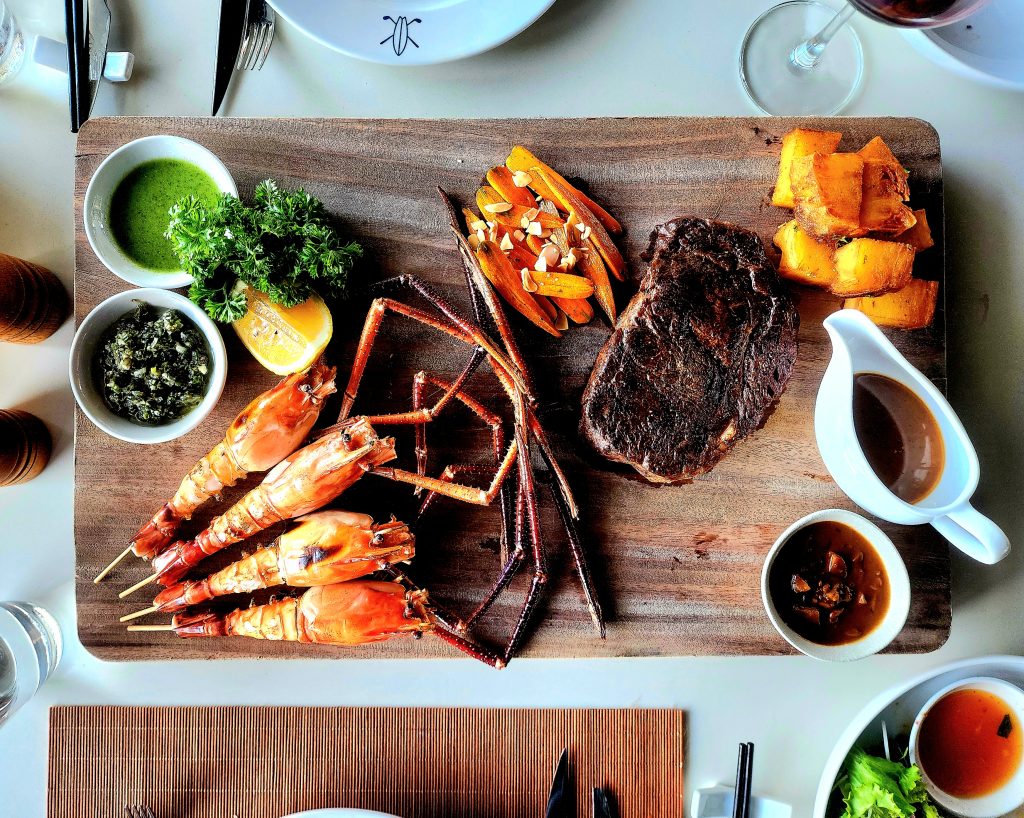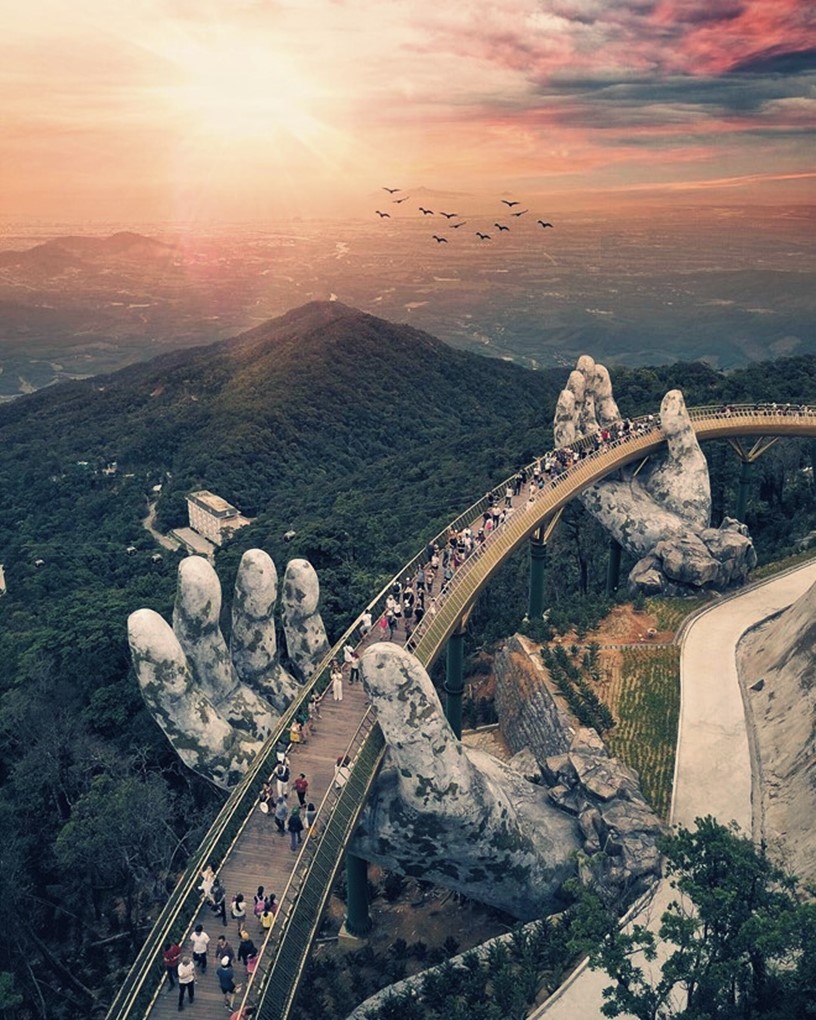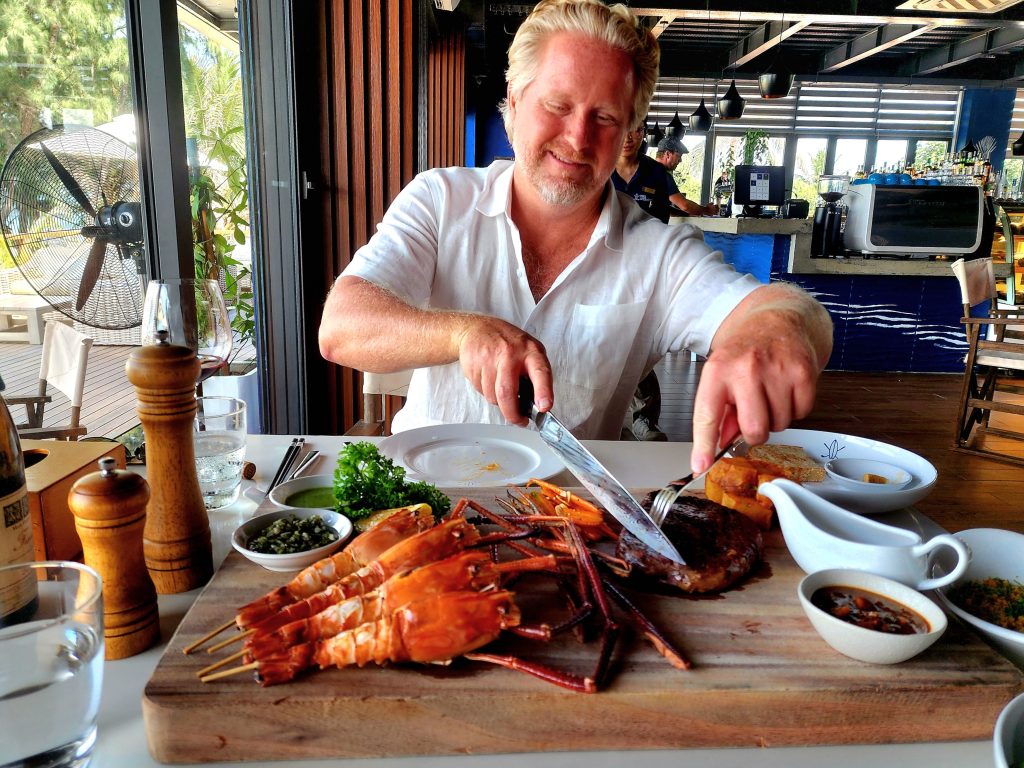Cẩm An Dreaming
Cẩm An is a small coastal commune of the Quảng Nam Province in central Vietnam. It sits about four kilometres northeast of the UNESCO World Heritage town Hội An.
I have always loved coming to this part of the world; there is something in the air here, an extra (artist’s) gene in the DNA of its people, a certain aesthetic and sense of old-world style: relaxed, elegant, charming, achingly beautiful. Hoi An, once visited, will tug at your heart for the rest of your life.
Hội An
The ancient township itself is an exceptionally well-preserved example of a South-East Asian trading port dating from the 15th to the 19th centuries. Its buildings and its streets reflect its influences, both indigenous and foreign, which have combined to produce this unique heritage site. The place is living history.
The old quarter is a pedestrian-only area, an enclave that ambles along the banks of the calm and enchanting Thu Bon River. The waterways are crossed by small bridges, some dating back to the 16th and 17th centuries. In the evenings, the Thu Bon is traversed by colourful little lantern boats, a rustic scene reminiscent of Venetian gondolas. Close by, in Bay Mau, you can paddle through the coconut forest in traditional, round basket boats. These unique little coracles (known as the thung chai or thuyen thung) are circular, lightweight and traditionally made from bamboo. The boats were invented by village fishermen during the French colonial era, who were able to avoid taxes on them by arguing they were just baskets.
I used to spend quality time at a little place at Ang Bang beach called Soul Kitchen, the owner, a Frenchman named Frank, ensured the quality of food, wine and music was as exceptional as the weed he loved to smoke. Sadly, some years ago now, Frank passed away, and his kitchen and its very soul atrophied, the mojo was gone, and all that was really left were the memories.
Just a short distance along the road, with a view of the Cham Islands (Cu Lao Cham), the beach at Cẩm An is pristine. It is quiet and relaxed, a place to just pause, let your body run a few repairs, and rinse your mind in divine sea air. At times, you can almost hear your soul cleansing itself.
The village is small and still has a strong sense of community; at its heart, it is a fishing village and farming community. Families send their fishermen out at dawn in their little coracles, returning with the daily catch, which they will hope to sell at the local market.
Rice paddies and vegetable gardens surround the inland outskirts of the village in fertile soil. The villagers live a life sustained by land and sea. It is here, rising over Cam An beach like a sort of majestic, five-star, surf-lifesavers clubhouse, you will find Max Lambert’s newest venture, a culinary temple known as The Surf & Turf Restaurant and Beach Club. I recently went to this culinary paradise twice in two days. I never wanted to leave, and I cannot wait to go back.
Sweet, Sweet Melancholy
Once a regular place of work and travel, I recently returned to Hoi An for the first time in twelve years. It was beyond cathartic. Dimorphous expressions overcame me, and just for a few brief moments, I needed time to stand still until homeostasis could reboot and normal programming resume. That is to say, I felt something deeply emotional to have returned here, so much so that it appeared to cause a little tear in the fabric of my reality.
Our memories, how we respond emotionally and how we internally regulate our bodies in response to phenomena, these are all stored and happen in a very old part of our brain (in evolutionary terms), called the limbic system, and more specifically, within it the amygdala, the hippocampus and the hypothalamus. These components all communicate with each other, make decisions and inform the body and the rest of the brain as to just how it will react emotionally and physically to things we encounter in the world. It’s these reactions -that can appear instinctive, intuitive and spontaneous- that we often call ‘heart-over-head’ type responses.
We sometimes find ourselves faced with certain phenomena that unlock almost forgotten memories, with deeply felt, even suppressed emotions attached to them. When we are confronted with these memories in a surprising or unanticipated way, they may unleash overwhelming torrents of joy. This can cause our bodies to react in unexpected ways, and it will occasionally do the opposite of what one expects. It does this in order to restore and maintain the balance required to be in a normal, healthy and safe physical and mental state.
Which is a very long way of explaining (mostly to myself) why, that first morning in Hoi An, alone and in a contemplative mood, I felt so much joy, and felt it so deeply, so intensely, that I think I might have actually shed a tear, and then remained, for the rest of the day in a state of sweet, sweet melancholy.
“People who have never had a broken heart will never understand dead roses, Tolstoy, airport lounges, Albinoni’s Adagio in G Minor, neat brandy, the moon and drizzle.”
-Wendy Harmer
Mighty Max
Max Lambert and his mate, Micky Francis, were pioneers in Vietnam’s travel and hospitality sectors, founding the original Hanoi Backpackers’ Hostel in 2004. This would prove to be an enormously successful venture, and one that put Vietnam firmly on the bucket list for a generation of adventure-seeking travellers.
The venue, in the old quarter of Hanoi, became legendary, a touchstone for an ever-growing group of ‘gap-year-aged’ nomads on a budget. Soon, Vietnam was no longer just somewhere one might pass through; it was the destination, and Hanoi Backpackers was the place to be.
Renowned as a venue perfectly curated to the needs and desires of young backpackers from all over the world, their hostels, tours and events grew to become places of excitement, camaraderie and community, where people could connect from all over the world, to engage with Vietnam in ways previously unavailable. Max and Mick blazed a trail through Vietnam that still resonates and enjoys enormous success to this day, and it inspired many others to attempt the same in other Southeast Asia countries.
When Max first started flirting with the idea of relocating his family to Hoi An, he had to overcome the need for high-quality, international education. So, he and his wife founded the Hoi An International School, now the leading international school in the region.
Max’s approach to education has proven similar to his philosophy in hospitality: successfully creating spaces that are welcoming, inclusive, and designed for meaningful connections. The school has a fine reputation for its nurturing environment, dedicated teachers, and its focus on preparing students for a global future.
Max Lambert continues to play a significant role in Vietnam in the areas of leisure and travel. He is also furthering its sustainable social and cultural development for generations to come. Apart from being a driven, high achiever, Max is good company, intelligent, humorous and generous. He is fun to be around and someone with whom breaking bread and sharing wine is a cherished and enriching experience.
The Surf & Turf
Entering the restaurant at street level is akin to finding oneself at the pearly gates; to the right lie the fires of hell, flames blazing from the open kitchen; to the left, a stairway to heaven. Angels with harps can faintly be heard overhead, or is that Jimmy Page unleashing an epic guitar solo?
Before me lies irresistible temptation: live tanks of lobster, Alaskan king crab, and all the rock stars of the sea, sole winking in invitation. The back wall is lined with dry-ageing cabinets, filled with the choicest breeds and top cuts of the finest cattle. All wrapped in thick coats of beef tallow, ageing to perfection, just waiting for you to arrive. Raphael’s cherubs greet you at the door, there to send you on your ascension of Jacob’s ladder.
As you enter the dining area, the space has the bright and airy look and feel of a beach house. Large windows frame a spectacular view, whilst slatted blinds offer protection from the sun. The interior is an electric blue, with chairs of canvas and wood, an island bar to one side of the room and a wall of wine in temperature-controlled, glass-doored cabinets on the other. Facing the beach is a wide deck with dining tables, which leads down to a magnificent lawn under palm trees for al fresco dining with a restorative, onshore breeze. A ribbon of white sand is a few steps below, blue water and blue sky spread out in front of you like a mosaic by Matisse.
The food was amazing, extraordinary. The steaks were cooked to perfection, tender, juicy, dry-aged and richly flavourful, with a sear so exceptional I just had to compliment it on the spot! Jumbo prawns, juicy, the plump, sweet flesh tender and delicious. From the impeccably cooked vegetables to the rich gravy and sauces, it was damned near perfection.
The wine was a cheeky Mark Haisma, Fixin with five years on it, from an Aussie winemaker astray in Burgundy. Mark Haisma was previously the winemaker at Yarra Yering in the Yarra Valley and now makes his own wines in Burgundy. The Fixin was nothing short of sensational, ripe, complex and with plenty of grunt for a medium-bodied Pinot Noir. For traditionalists, beware the talented rebel, with an eye on climate change and possibility, Mark Haisma is shaking it up in Burgundy and making truly wonderful wines.
The charm and serenity of this little strip of the central coast, with Ang Bang and Cam An beaches next to each other, has plenty of attractions. The Surf and Turf Beach Club is not just another thing to do on the list; it’s the very reason you get there.
Sun God
Kazuo Ishiguro is one of my favourite authors. Born in Nagasaki in 1954, he moved with his family to Britain in 1960, where he grew to become one of the most celebrated writers in the English-speaking world. His list of works includes ‘The Remains of the Day’ (1989), ‘When We Were Orphans’ (2000) and ‘Never Let Me Go’ (2005). In ‘When We Were Orphans’, Ishiguro uses sparse language and fading memory to create a vast and murky emotional landscape, in a collapsing time and space; readers soon find themselves lost and on unsteady ground.
Ishiguro’s characters are often struggling to resolve issues from their past, and he likes to leave readers at the end of his stories without any clear resolution, imparting in them what has been described as a ‘melancholic resignation’.
I cite Ishiguro here because this feeling he leaves you with at the end of several of his novels is perfectly described in Japanese as ‘Mono no aware’, a term for the gentle sadness and wistful appreciation of the ephemeral nature of life and beauty. It translates to ‘the sensitivity of things’ and reflects an awareness of a poignant blend of joy and sorrow at the fleetingness of moments.
In Never Let Me Go, the narrator, Kathy H, is a clone; in Ishiguro’s 2021 novel Klara and the Sun, the narrator is Klara, an ‘artificial friend’, a humanoid robot designed to serve as a companion to the lonely and ailing teenager Josie. Klara has a unique reverence for the sun, the source of all her energy, her ‘nourishment’. The sun serves as a divine, life-giving entity in Klara’s solar-powered perception; she views it as something akin to a benevolent god, one that can help even humans to receive its blessing and have their health restored.
It is an incredible novel that explores themes of love, devotion and attachment when you don’t quite belong or fit in and never will. For Klara, basking in that sunlight, all else could momentarily be put aside, and although she might never truly belong, these were days in paradise, a glimpse of heaven.
For two days in August, on the central coast of Vietnam, I reconnected with cherished but distant friends, worshipped the sun and appreciated its healing power, and I felt a deep sense of mono-no-aware, (物の哀), dissociation and the power to touch one’s soul in the fleeting beauty of impermanence.
This is why we must travel, get off our asses and out of our comfort zones, when we reach out, when we seek, when we experience; then we learn, we grow, we develop, and we improve both as individuals and as a species. And when we can appreciate the moments, the glimpses, the events in our lives, no matter how fleeting, or how far away, we are enriched and made more whole.
Darren Gall

